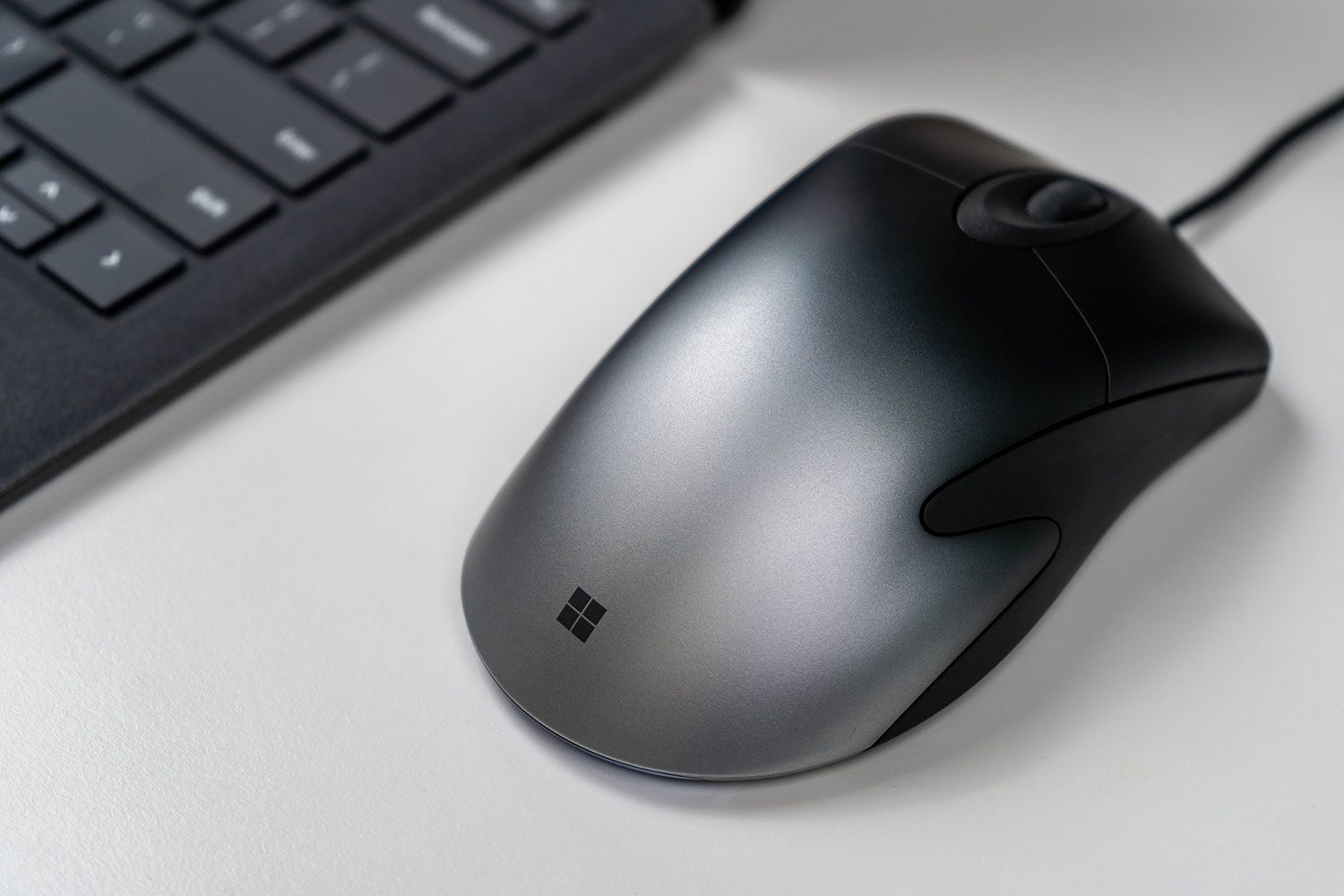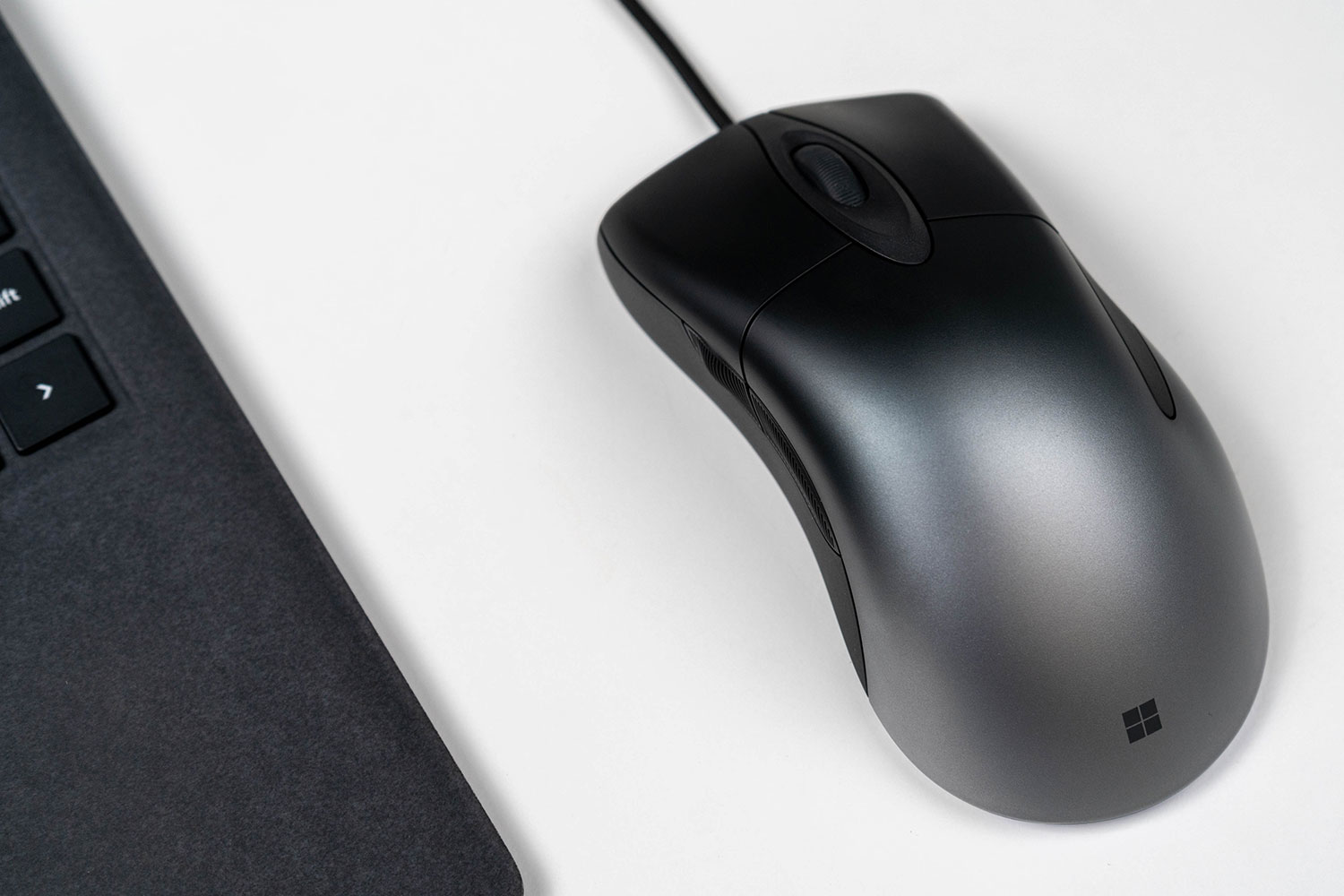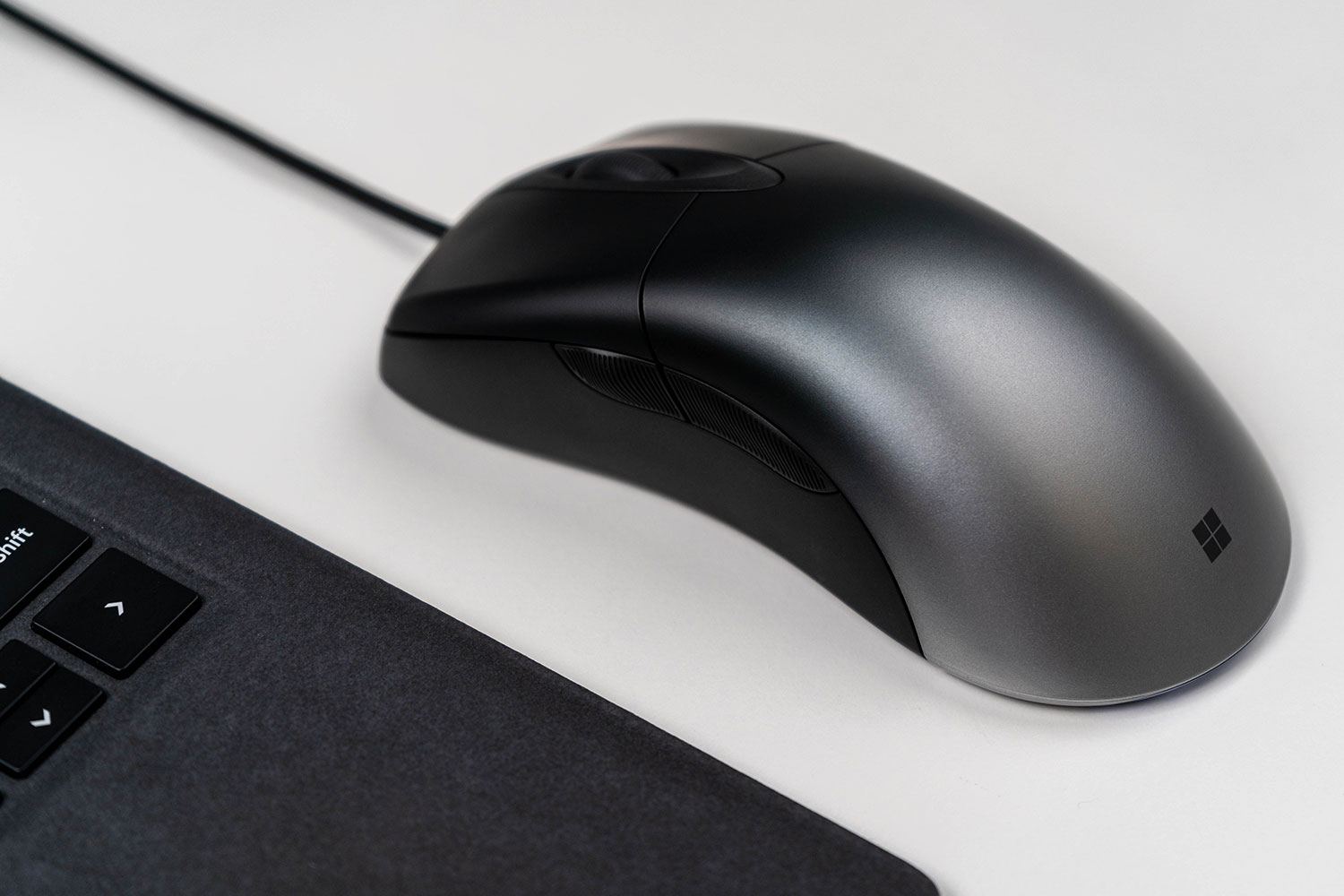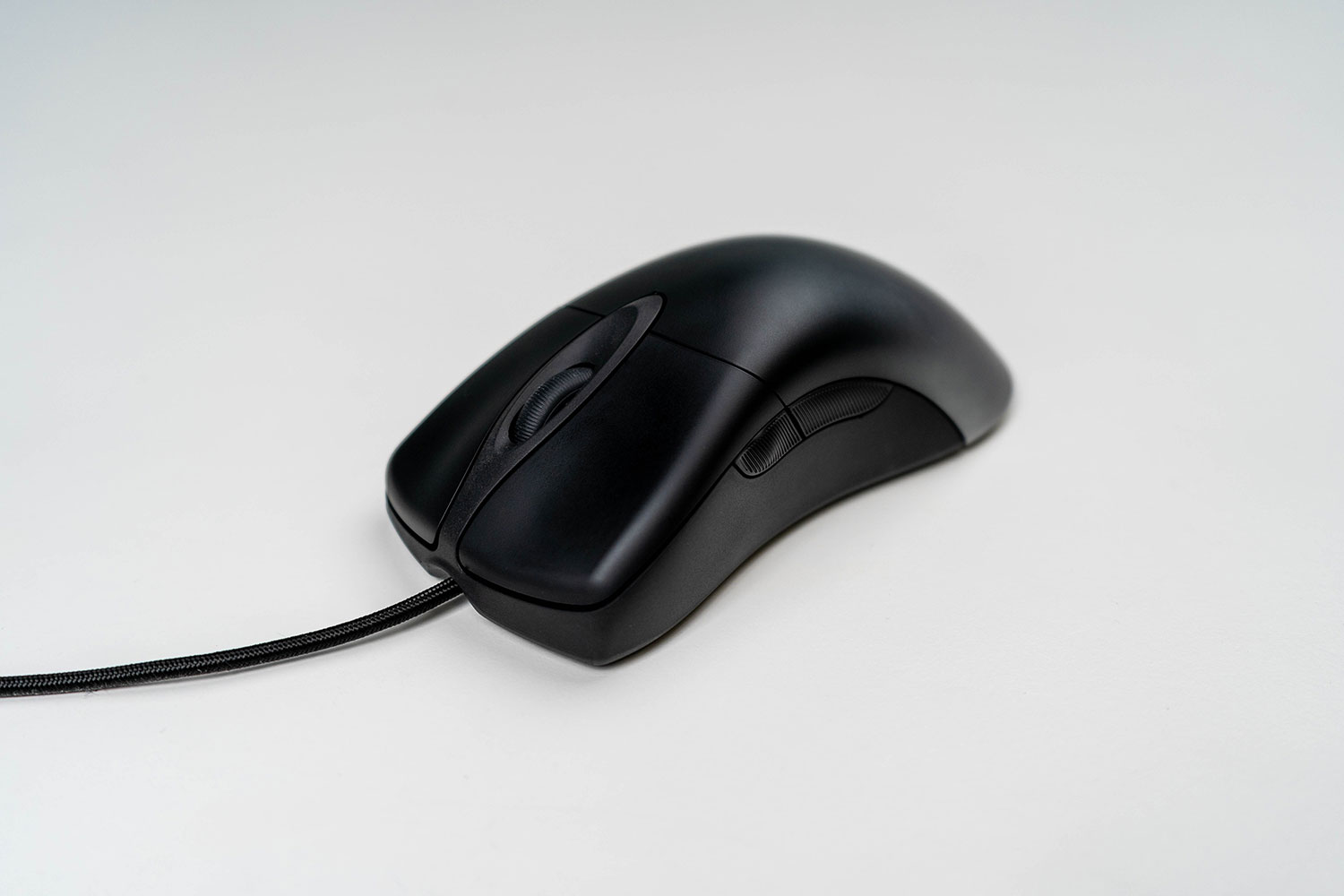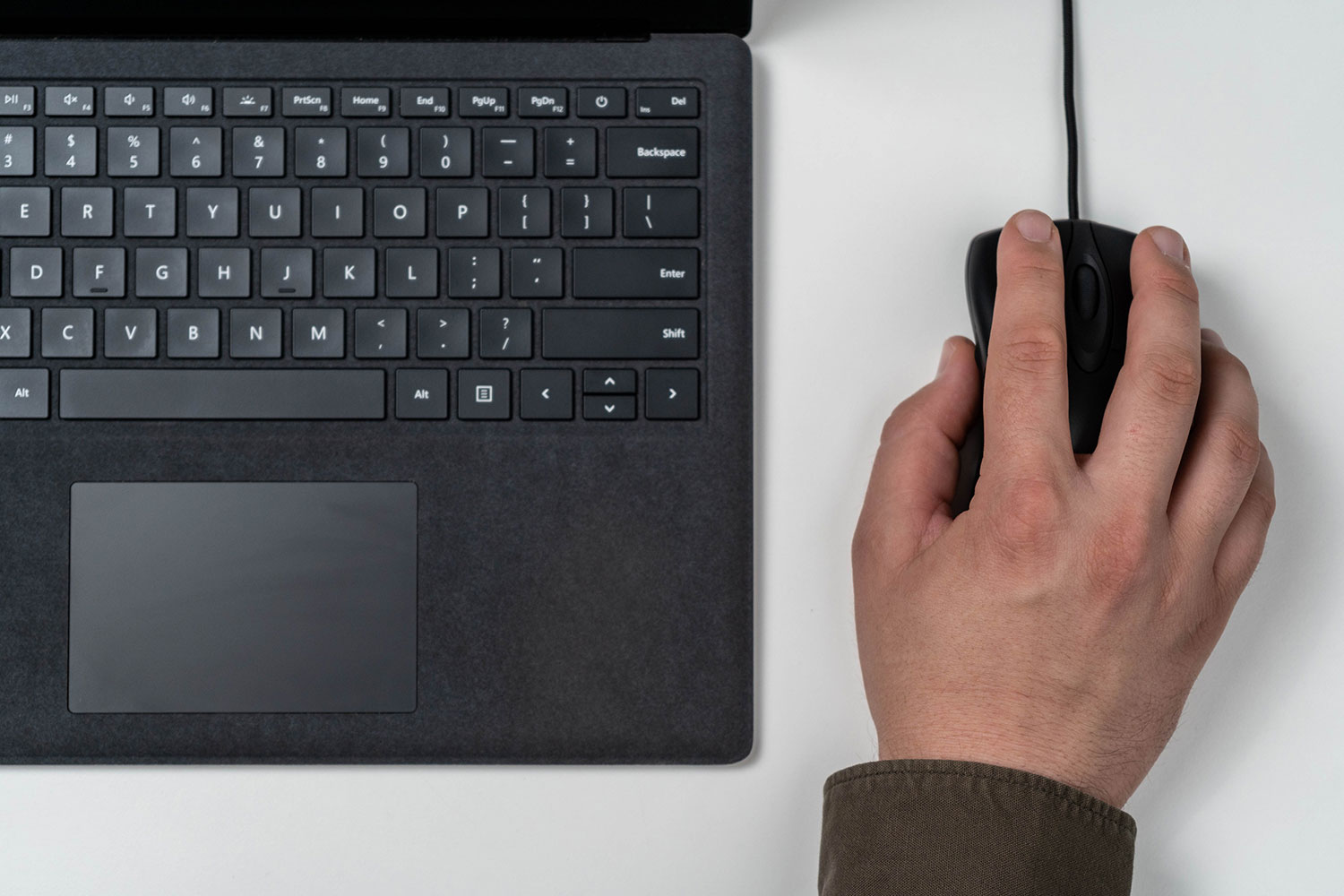Work hard, play hard. That tired cliché has taken on new meaning for PC geeks. The success of Razer’s Blade laptop, which fused a professional profile with gaming-capable hardware, has spurred interest in the crossover between hardcore workaholics and hardcore gamers.
Microsoft’s Pro IntelliMouse ($60) is a spin-off of the company’s Classic IntelliMouse, and targets this demanding demographic. Here, Pro refers not only to professional gaming, but also the things you do between games to pay for your fantastically powerful rig.
You might expect this unusual approach to be paired with an unusual design. On the contrary, the Pro IntelliMouse looks and feels mundane. It retains the elegant, swooped shape of the Classic IntelliMouse, and adds only a subtle fade effect (black to silver or white, your choice) to spice things up.
The mouse encourages a relaxed palm grip. It doesn’t feel nimble, but the comfort is a boon if you’re playing for more than a few hours at time. I sometimes deal with persistent hand pain after using a gaming mouse for several weeks. This problem plagued me when testing several high-end gaming mice, like the otherwise stellar Razer Mamba Hyperflux. After a month with the Pro IntelliMouse, however, I’m pain-free.
Comfort comes at the expense of buttons.
Comfort comes at the expense of buttons. There’s only five, including the clickable scroll wheel. The buttons are well positioned, offer great tactile feels, and have significant travel. Still, five is a number that’ll discourage gamers. Good alternatives with seven to nine buttons, like the Corsair M65 and Razer DeathAdder Elite, can be snagged for the same price. To make matters worse, only three of the Pro IntelliMouse buttons are programmable.
Lackluster customization is a trend. The Pro IntelliMouse has customizable lighting, but the only LED is a tiny strip on the rear of the mouse. You also can’t change the weight of the mouse or snap on different casing to change the grip. Microsoft’s Mouse And Keyboard Center software allows minor adjustments but pales compared to the detailed customization a mouse from Corsair, Logitech, or Razer can provide.
Simplicity has benefits, however. Corsair, Logitech, and Razer mice are customizable but burdened with annoying, confusing software. The Pro IntelliMouse is straightforward and simple. All universal settings, including button customization, fit into one menu. The second – and only additional – menu servers up customization of the wheel button and thumb buttons on a per-app basis.
All these options are neatly arranged in a sleek interface that loads in the blink of an eye and doesn’t occupy the rig’s system tray when you close the window. There’s no log-ins and no annoying prompts. The MKCHelper.exe task used just 0.2 megabytes of RAM on my desktop.

The Pro IntelliMouse has a PixArt PAW3389PRO-MS sensor that supports up to 16,000 DPI, can track at up to 400 inches per second, and works on glass. These specifications are on par with other high-end gaming mice in the same $60 price bracket. The numbers add up to an outstandingly responsive, yet smooth, feel. I spent most of my time at 1,600 DPI, a bit more sensitive that the default of 1,000 DPI. I bumped the setting as high as 3,200 while gaming. Of course, you could boost it to the inhumanly twitchy 16,000 DPI. If you can handle that, well, you should consider a career in esports.
Whatever setting you choose, it feels great. The sensor is quick, responsive, reliable, and never skipped a beat when used on a clean mousepad or my rather, uh, un-clean desk. The sensor is helped along a smooth undercarriage that glides across the textured surface of my desk more easily than Razer DeathAdder Elite or Roccat Kova, two other mice I’ve tried recently. Those alternatives also have capable sensors that can technically work on many surfaces, but they need a mousepad to perform their best.
Anyone hoping the Pro IntelliMouse can hold up to all-day sessions will love its comfort and easy responsiveness on a wide variety of surfaces. However, the mouse lacks the high-end features found on Logitech’s more expensive MX Master 2, which add an extra scroll wheel. Perhaps the most glaring issue for Pro users, however, is the mandatory tether. You can only buy the Pro IntelliMouse with a tough braided cord. That concession to gamers is sure to bug anyone seeking a clean, cord-free setup.
More than the sum of its parts
On paper, the Pro IntelliMouse has problems. Its missing features found on gaming mice and professional mice, and though its $60 price tag is fair, Microsoft rarely offers the mouse on sale. On the professional side, Logitech’s MX Master 2 is often discounted to about $70. Gamers, meanwhile, have literally hundreds of potential options with more buttons and more customization.
And yet… I like it. A lot.
That’s no doubt because it truly feels designed for someone with my combination of wants. I want a mouse that feels comfortable day after day, week after week. I also want a mouse that’s responsive and smooth in games. And I want a mouse that looks unique without edging into gaudy.
Microsoft’s Pro IntelliMouse meets those needs. Its lack of features makes it a hard sell for gamers or professionals alone but, if you’re truly part of both camps, the Pro IntelliMouse is the do-it-all mouse you’ve long needed.

